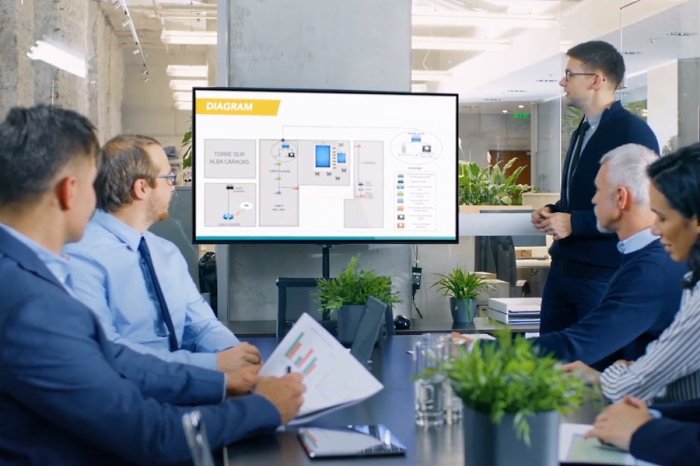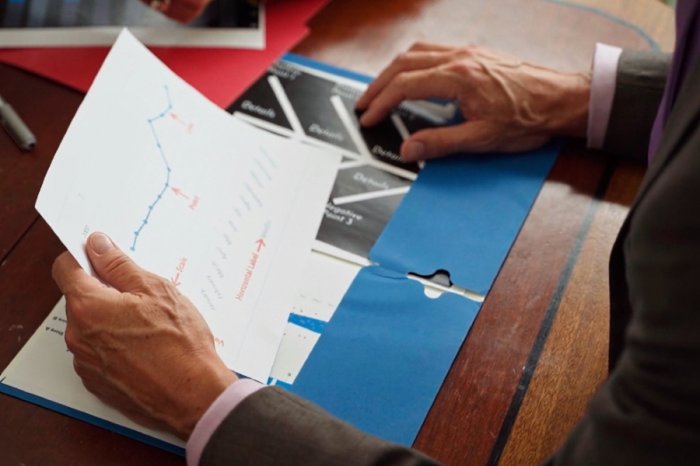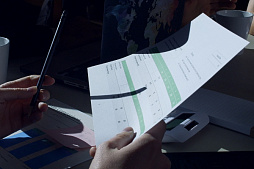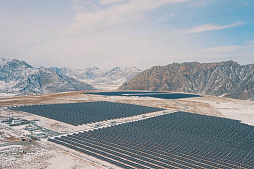Feasibility study services for investment projects
Costex Corporation DBA offers:
• Investment financing from $ /€ 5 million or equivalent and more
• Minimizing the contribution of the project promoter
• Investment loan term up to 20 years
• Credit guarantees
This document defines the types of risk associated with the project and increases the chances of investment success.
In investment engineering, a high-quality feasibility study lays a foundation for the rational allocation of financial or other resources, protecting the business from making unreasonable decisions.
Costex Corporation DBA offers comprehensive services in the field of investment engineering and consulting, including the development of feasibility studies for projects in the energy sector, mining, oil and gas sector, heavy industry, environmental protection, infrastructure, agriculture and other industries. Our team always demonstrates competence, commitment to the interests of customers, high reliability and a professional system approach.
Check out our investment services and contact an LBFL representative in your area to learn more about the benefits offered for your project.
Typical goals and stages of the feasibility study
The main goal of conducting a feasibility study for large investment projects is a comprehensive analysis of the facility in terms of the feasibility of its construction and operation.These analyzes can be carried out, for example, in legal, organizational, technical, economic and financial aspects, as well as in terms of the project's compliance with environmental standards.
In this context, it is important to draw up a schedule and budget, determine the composition of the project team responsible for the preparation and implementation of the project. The latter usually includes specialists from different fields, because any large investment project is interdisciplinary and structurally complex.
In the case of very costly and risky projects, the development of a feasibility study is especially important. In such situations, the so-called pre-feasibility study is often used to reduce the risk of unexpected costs at the main, most costly stage of conducting a "full-scale" study.
In other words, an experienced financial team can try to identify risks as early as possible and recognize the project as unviable with relatively simple methods.
This may be "pre-development" or a brief pre-feasibility study that only identifies investment opportunities in the chosen area without evaluating the project.
A good feasibility study minimizes the risk of approval and funding for a project that is in some way unrealistic or irrational.
Financial, legal and engineering teams working on the analysis of an investment project must prove or disprove the viability of the enterprise and determine the financial and organizational structure, minimizing the risk at the stages of project implementation.
The general goals of a project feasibility study include:
• Estimation of the scale and main technical parameters of the facility.
• Calculation of the initial investment and operating costs that will be incurred by the participants of the investment project at different stages.
• Definition of the schedule of project costs, which allows the most rational way to plan the flow of funding and select their sources.
• Justification of the economic, commercial, social or environmental feasibility of the analyzed investment (if applicable).
• Project risk and constraint analysis that identifies and eliminates construction and operational risks and uncertainties.
• Comparison and selection of the most appropriate ways to implement the project.
The completeness and validity of the recommendations are the most important benefits of a feasibility study for large investment project.
Preparing such a document reduces the risk of missing important aspects of the project. In addition, the feasibility study allows the business to choose the best option for the implementation of the planned project, so it is recommended to involve a wide team, including independent experts and representatives of all stakeholders.
The most important disadvantage of the feasibility study is the complexity, long execution time and high cost, which contributes to an increase in the number of cases of insufficient and superficial pre-project analysis. Sponsors and other participants in large investment projects should be aware that unjustified savings or ignoring this stage can result in huge losses in the next stages.
Conducting a feasibility study: main stages
A typical form of a feasibility study contains separate elements in which the project is analyzed from different aspects.This may be, for example, the technical (engineering) feasibility of the project, economic or financial viability, organizational and other aspects.
The technical part of the feasibility study considers the existing and potential engineering problems of the project, which determine the possibilities for achieving the goals of the participants. The general logical formula of this part of the document is based on the fact that the proposed engineering solutions respond to the identified problems of participants and partners.
Then the project goals are determined that can solve the identified problems, and possible technical and organizational options for achieving these goals are studied in detail.
After selecting a project option, a schedule for its implementation is drawn up.
The technical feasibility of a project can be described by a matrix that represents the mechanism of intervention through the project into the current state of the business / social environment. It is also important to indicate the ways and specific tools that can support the project in the operation phase, and not just effectively carry out the investment phase.
The organizational feasibility of the project is expressed in the ability of the institution responsible for the implementation of the project to effectively implement the investment process. This section of the feasibility study considers the organizational and legal risks that threaten the implementation of the project, as well as the impact of the project on the environment and / or community.
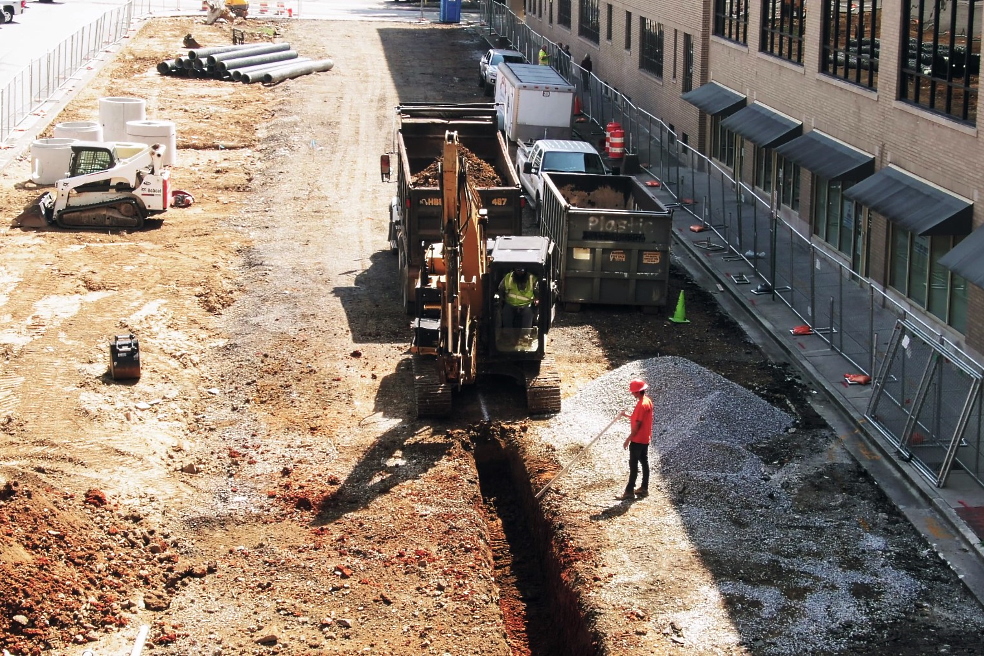
The stages of financial and economic analysis within the framework of a feasibility study include:
• Preliminary assessment of investment costs and their schedule.
• Identification of sources of financing investment costs, indicating the share of the participants' own resources, loans, subsidies, and so on.
• Assessment of the financial position of investors in terms of the possibility of fulfilling financial obligations and maintaining the project at the operational stage.
• Detailed financial analysis of the project, including calculation of revenues and estimated operating costs over the expected useful life.
• Preparation of a cash flow statement for the investment and operational stages, which should demonstrate the maintenance of the financial liquidity of the project.
• Forecast of the development of financial indicators, including FNPV (financial net present value) and FRR (financial internal rate of return).
• The economic analysis should include a consideration of the economic benefits that the project will generate in the socio-economic environment, as well as calculations of the baseline ENPV, ERR, B/C, and so on.
• Analysis of the sensitivity of the project to changes in key parameters, such as investment costs, operating costs and the risk of their occurrence.
Any large project must be financially sustainable.
The analysis of financial stability is aimed at checking the assumption that the allocated financial resources are sufficient to cover all financial expenses during the entire reporting period.
The financial viability of the project is confirmed if the cumulative net cash flow is not negative in any of the analyzed periods of work. Financial stability should be checked in relation to the financial position of the investor and operator of the object being created.
Thus, the financial analysis of an investment project will focus on assessing the return on investment and net present value, as well as checking the financial sustainability of the project and the beneficiary/operator. On the other hand, the economic analysis of the project in the framework of the feasibility study is carried out in terms of benefits for the project participants and is based on an assessment of these benefits, while taking into account the parameters obtained as a result of the financial analysis of the project.
Table: The main sections of the feasibility study for large projects.
| Section | Brief description |
| Essence of the project | Description of the business idea, a list of customers, investors and stakeholders, as well as a general description and key parameters of the facility and its infrastructure. |
| Marketing analysis | The results of marketing research along with presentation of the marketing strategy developed on this basis with forecasts of future demand, sales, costs and income of the project. |
| Construction site, location and project environment | Justification of the optimal place for construction and development of activities within the framework of the project, taking into account external and internal factors. |
| Technical rationale | Engineering calculations, drawings and technical description of the principles of operation of the facility, justification of production programs and determination of the optimal capacity of the facility with its future increase; choice of equipment, etc. |
| Raw materials, fuel and energy for the project | Justification of the choice of energy sources, types and levels of consumption of fuel, raw materials or other materials based on the above engineering calculations. |
| Human resources | Determining the needs of the future enterprise in personnel, their competence, education and experience; planning the costs of hiring, training and paying salaries. |
| Initial investment and operating costs | Calculation of expenses of participants related to engineering services, construction, obtaining permits, setting up equipment, launching and operating the facility. |
| Development of the project implementation process | Planning of organizational measures to be carried out at each stage of the project implementation. |
| Financial analysis | Final analysis of cash flows, costs and income of the future project, identification of sources and schedule of its financing. |
An example of a feasibility study for a large project
Below we have given an example of a feasibility study for a large investment project, containing the main points without details and specific figures.This example gives a better idea of the basic principles of developing this document in practice.

Introduction
Business idea and a brief history of the development of an investment project. Market analysis and the concept of bringing the product to the market. The general concept of providing the enterprise with raw materials, energy, fuel and auxiliary materials (includes the specification of raw materials, energy carriers and auxiliary materials and sources of supply, the required quantity and quality). Production capacity, working time and production plan. Specification of the finished product.Technical analysis of the project
Analysis of requirements and conditions for the development of a new project:• Location.
• Land plot requirements.
• Transport accessibility.
• Building site plan.
• Location of equipment.
Key issues of environmental protection during construction and operation:
• Waste management.
• Minimize noise and other impacts.
• Rules regarding protected areas.
• Hazardous waste management.
• Fuel combustion standards, etc.
Formal requirements for the construction and operation of the facility:
• Construction standards.
• Technical characteristics of buildings, equipment and devices.
• Analysis of the operating conditions of the facility, including chemical balance, heat balance, fuel combustion management, waste management and other production aspects.
• Flue gas treatment, water and air treatment systems (denitrification, desulfurization, etc.).
• Plan for repair, maintenance and preventive inspections of equipment.
• Description of the applied engineering solutions in accordance with the selected production processes within the framework of international standards.
• General construction, installation, electrical or other aspects of the project.
• Estimated consumption of raw materials, fuel and electricity.
• Designing a transport network for servicing an object.
• Improvement and security of the territory.
• Fire safety, etc.
Economic and financial analysis
This section of the feasibility study for a large investment project should include an assessment of the economic efficiency of the project and the economic and financial position of the initiating company based on the income statement, cash flow and changes in the demand for capital.The section contains financial forecasts with a specific time horizon (terms of investment).
An important point of the analysis is to determine the optimal structure of project financing with an assessment of the use of bank loans and financing under national and / or international programs.
A comparison of alternative solutions for the organization and financing of the project during the construction period and the operation period is necessarily provided, including the impact of the considered alternatives on the amount of production costs and the schedule for their distribution.

Other items of economic and financial analysis include project sensitivity analysis, analysis of risk factors and their impact on the project, assessment of the workload of the facility under certain conditions, as well as its impact on the planned performance indicators.
The feasibility study of the project ends with conclusions in the form of a professional opinion and recommendations for the project team.
In particular, the study should contain recommendations on the choice of the type of equipment and production processes, the cost of the project and sources of financing, the achievement of planned indicators, risk management, etc.
Feasibility study and other investment engineering services
The investment of large capital is always preceded by a feasibility study of the investment project.This stage plays a key role in the investment process, since the more information investor receives about the future enterprise, the less risks there will be at the project implementation stage.
The start of the investment process requires a long period of negotiations, approvals, checks and reviews, which are based on the conclusions of the feasibility study and the recommendations of experts.
Feasibility studies for a project in the energy sector, infrastructure, industry or other sectors have many specific aspects, which require the involvement of a multidisciplinary team of specialists in finance, law and engineering.
We are ready to provide you with such a team right now.
Costex Corporation DBA offers flexible long-term loans for large projects with maturities up to 20 years.
We participate in the organization of project finance (PF) schemes, offer bank guarantees and loan refinancing, and provide investment engineering and consulting services.
Among our services:
• Financial analysis and modeling.
• Analysis of the attractiveness of investment projects.
• Conducting a feasibility study for large investment projects.
• Development of an investment business strategy.
• Writing an investment memorandum.
• Complex examination of projects.
• Project management, etc.
Our company, together with leading engineering firms and international manufacturers of industrial equipment, is ready to offer comprehensive services in the field of construction or modernization of capital-intensive facilities under an EPC contract.
If you are looking for a reliable and experienced general contractor, please contact our specialists.




